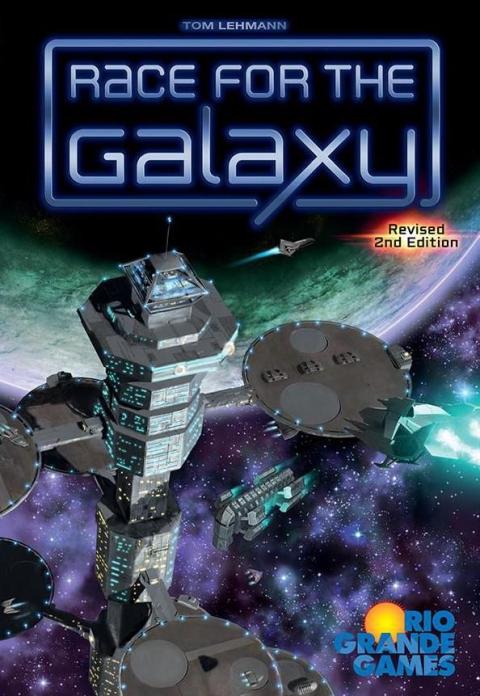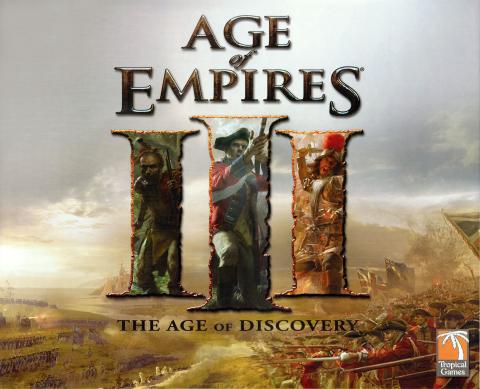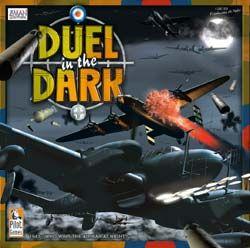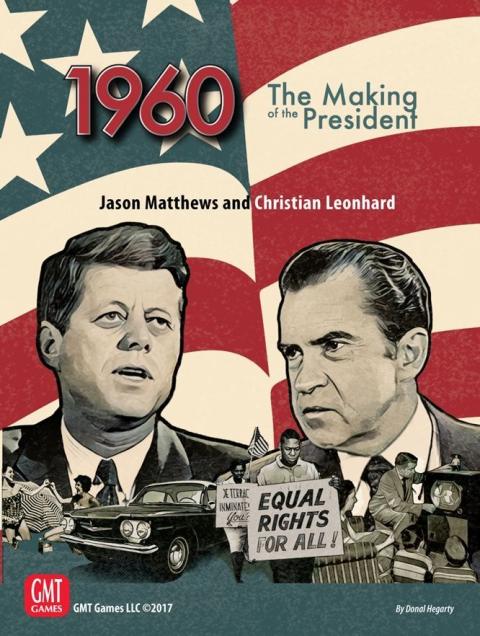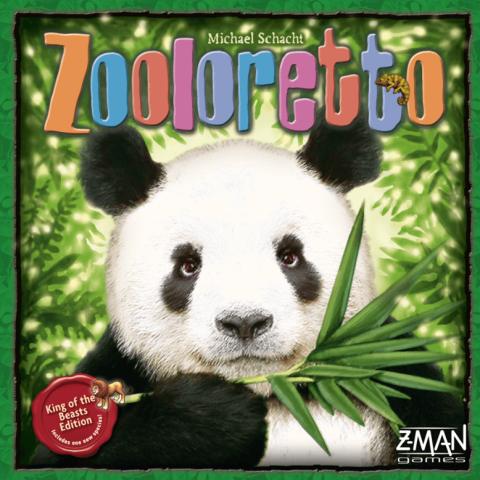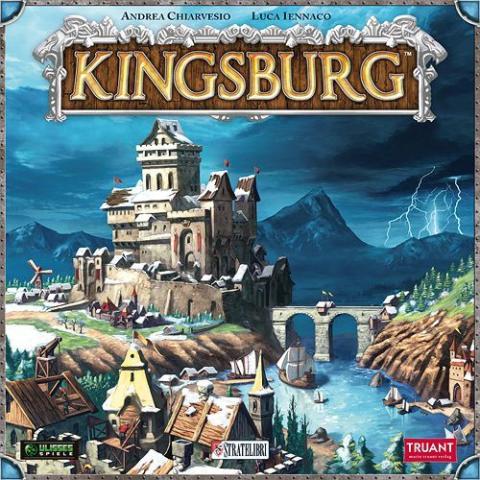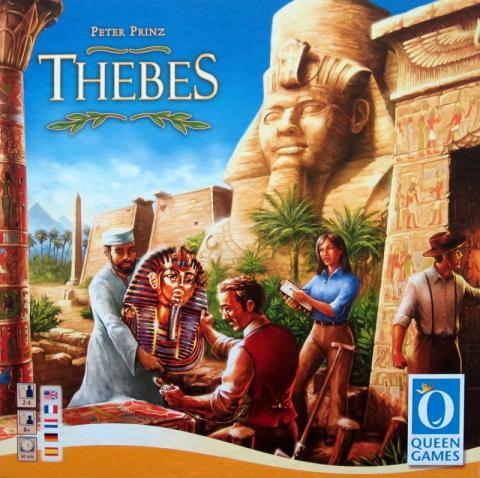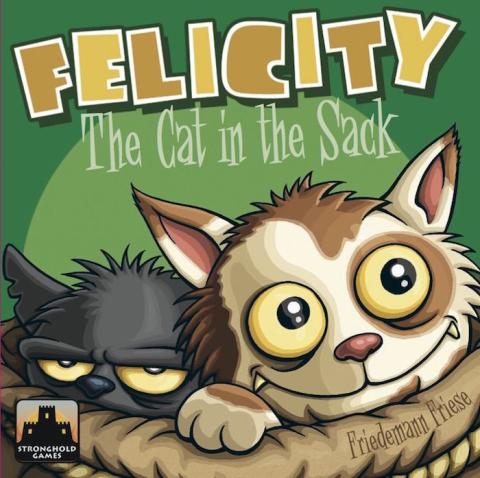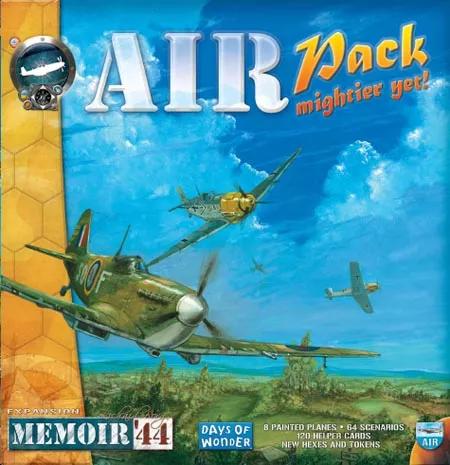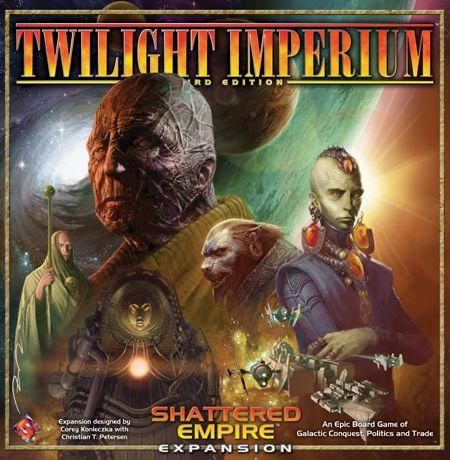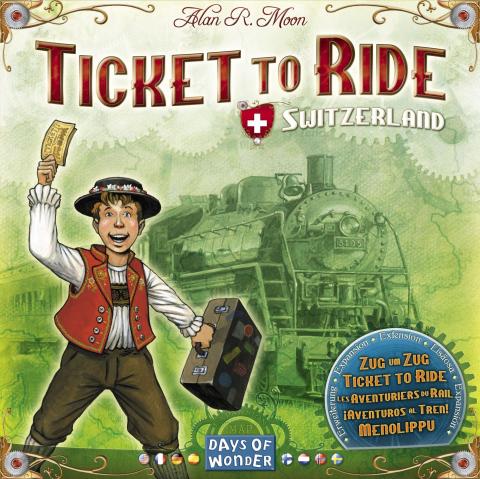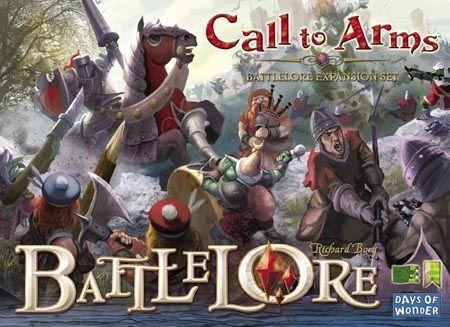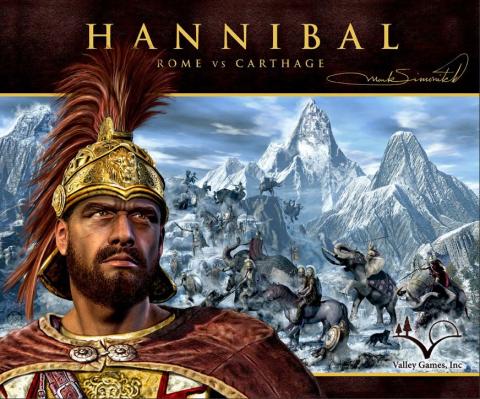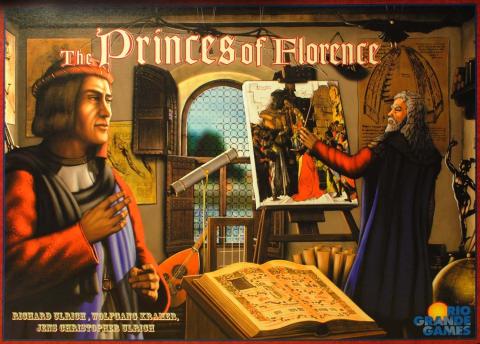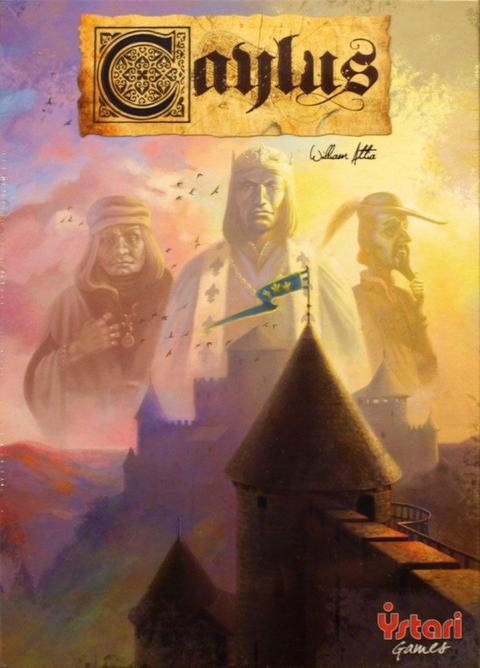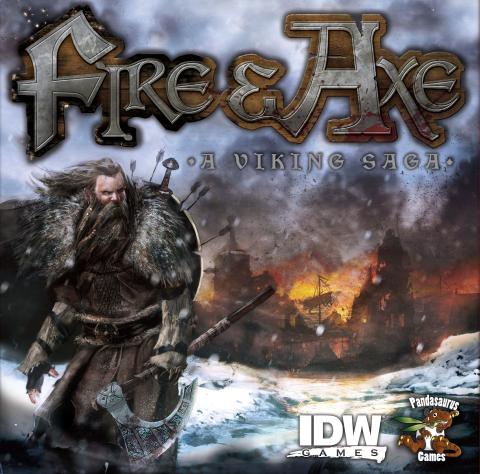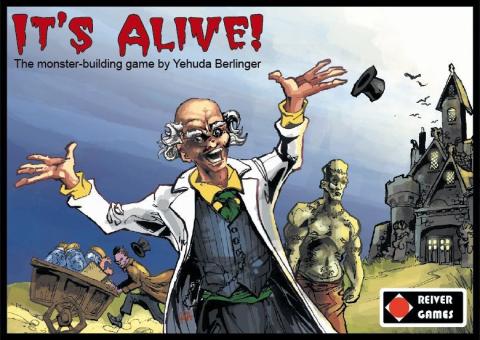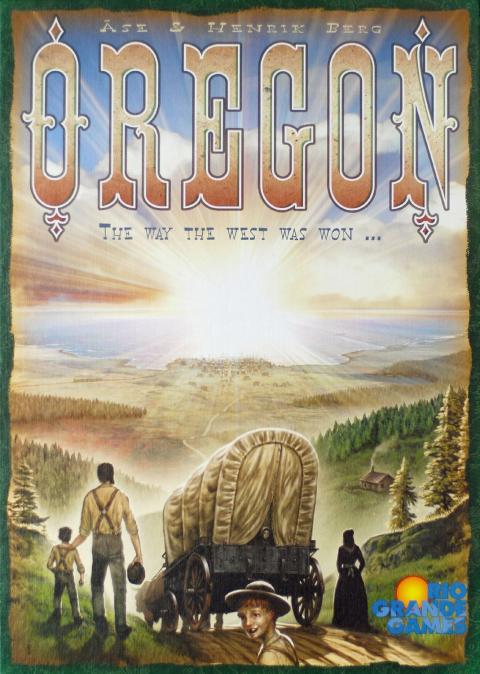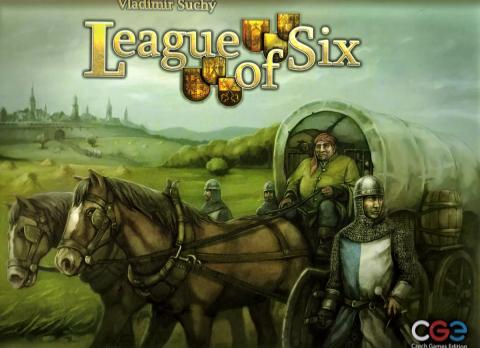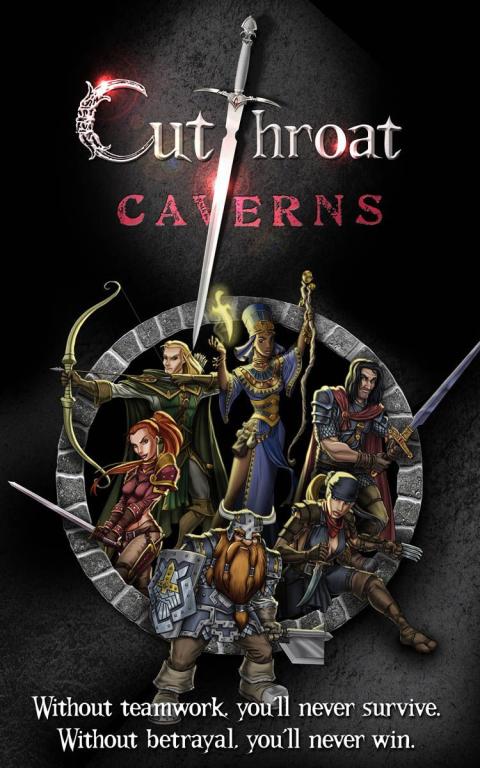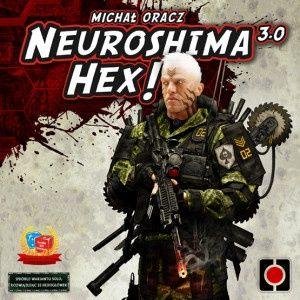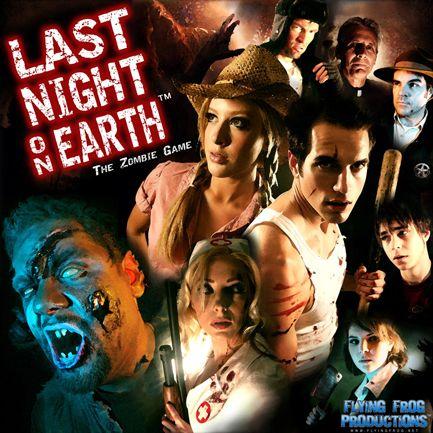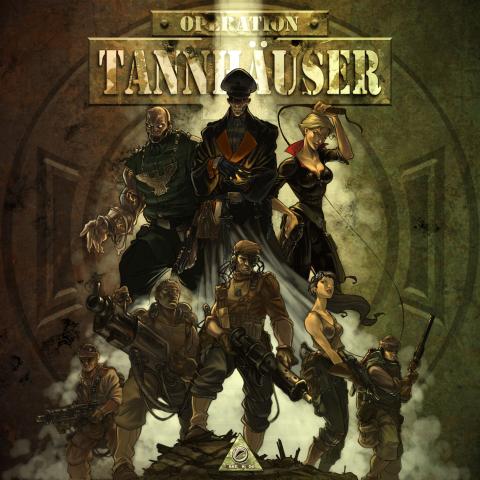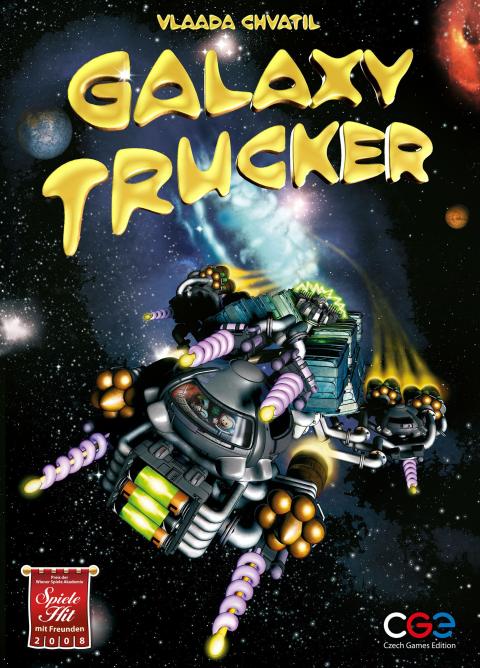Presenting the nominees of the first annual Dice Tower Awards for games released in 2007 in categories including artwork, small publisher, new designer, and the game of the year!
Game of the Year

2018 UPDATE: The second edition of the game is improved for CVD (color blindness) and includes 5 revised cards from the original version and 6 New Worlds promo homeworlds. The promo homeworlds and first edition compatible Revised Cards are both available for purchase through the BGG store.
In the card game Race for the Galaxy, players build galactic civilizations by playing game cards in front of them that represent worlds or technical and social developments. Some worlds allow players to produce goods, which can be consumed later to gain either card draws or victory points when the appropriate technologies are available to them. These are mainly provided by the developments and worlds that are not able to produce, but the fancier production worlds also give these bonuses.
At the beginning of each round, players each select, secretly and simultaneously, one of the seven roles which correspond to the phases in which the round progresses. By selecting a role, players activate that phase for this round, giving each player the opportunity to perform that phase's action. For example, if one player chooses the settle role, each player has the opportunity to settle one of the planets from their hand. The player who has chosen the role, however, gets a bonus that applies only to them. But bonuses may also be acquired through developments, so you must be aware when another player also takes advantage of your choice of role.
In the card game Race for the Galaxy, players build galactic civilizations by playing game cards in front of them that represent worlds or technical and social developments. Some worlds allow players to produce goods, which can be consumed later to gain either card draws or victory points when the appropriate technologies are available to them. These are mainly provided by the developments and worlds that are not able to produce, but the fancier production worlds also give these bonuses.
At the beginning of each round, players each select, secretly and simultaneously, one of the seven roles which correspond to the phases in which the round progresses. By selecting a role, players activate that phase for this round, giving each player the opportunity to perform that phase's action. For example, if one player chooses the settle role, each player has the opportunity to settle one of the planets from their hand. The player who has chosen the role, however, gets a bonus that applies only to them. But bonuses may also be acquired through developments, so you must be aware when another player also takes advantage of your choice of role.
Year Published:
2007
Designers:
Thomas Lehmann
Publishers:
Rio Grande Games
Best Family Game

In Zooloretto, each player uses small, large, wild, and exotic animals and their young to try to attract as many visitors as possible to their zoo – but be careful! The zoo must be carefully planned as before you know it, you might have too many animals and no more room for them. That brings minus points! Luckily, your zoo can expand. A zoo of a family game in which less is sometimes more...
Can be combined with
Aquaretto
Zooloretto Mini
Can be combined with
Aquaretto
Zooloretto Mini
Year Published:
2007
Designers:
Michael Schacht
Publishers:
ABACUSSPIELE
Best Artwork

Publisher blurb
Including a total of 180 plastic figures and dozens of unit types, Starcraft: The Board Game features an innovative modular board of varying sizes, which guarantees a new experience each and every game. An exciting card driven combat system allows players to modify and upgrade their faction with a wealth of powerful technologies. Players can unleash a Zergling rush, use powerful Protoss shields to halt an enemy invasion, or even send cloaked Ghosts out to guide nuclear missiles to their target.
Description
In StarCraft: The Board Game, players battle for galactic domination on a dynamic board of interconnected planets. Planetary setup is already part of the game - every player gets two planets to place, and will place their starting base on one of them. Planets are connected with direct and "Z-Axis" connections that are placed during setup, but can sometimes later be modified during the game, and movement is only possible within planets and through those connections (by means of purpose-built transports).
Each player controls a faction out of six, that belongs to one race out of three - Humans, Zerg, and Protoss. Each faction has a unique special victory condition, but all factions can also win through victory points that are gained by controlling special areas on some of the planets. Players build units and base upgrades with the resources they gather from the planetary areas that they control, and gain access to additional unit types through those upgrades.
Each turn is subdivided into first a planning phase, then an execution phase, and finally a regrouping phase (used for cleanup). In the planning phase, players take turns playing a number of order tokens into stacks on each planet, with orders placed later obstructing the ones that were placed before them. This allows players to set up combos of their own, but also to obstruct plans of other players. In the execution phase then, players take turns again, and when a player's turn comes up he can choose one of his order tokens on top of any stack and execute that one - if all of their orders are obstructed, they skip their action and draw an event card instead. The execution phase isn't over until all players executed all of their orders. Possible orders are Build (used for building both units and buildings), Mobilize (used for moving units and attacking enemies) and Research (see below), and orders can always be Standard Orders or Special Orders, with the special orders having prerequisites but stronger effects.
Players can also research new technologies and thus improve their combat deck in a precursor to more recent deck building mechanisms. Each player is given a combat deck unique for their race at the start of the game, and when they research new technologies then matching cards are added to that deck. This allows the players to customize what cards they will draw; when the last card of the deck is drawn, the deck is reshuffled. Most cards remain in the combat deck once researched, though some researched technologies add effects that are always in play, while some particularly strong combat cards are discarded after one use.
"Reimplements"
StarCraft (video game)
Including a total of 180 plastic figures and dozens of unit types, Starcraft: The Board Game features an innovative modular board of varying sizes, which guarantees a new experience each and every game. An exciting card driven combat system allows players to modify and upgrade their faction with a wealth of powerful technologies. Players can unleash a Zergling rush, use powerful Protoss shields to halt an enemy invasion, or even send cloaked Ghosts out to guide nuclear missiles to their target.
Description
In StarCraft: The Board Game, players battle for galactic domination on a dynamic board of interconnected planets. Planetary setup is already part of the game - every player gets two planets to place, and will place their starting base on one of them. Planets are connected with direct and "Z-Axis" connections that are placed during setup, but can sometimes later be modified during the game, and movement is only possible within planets and through those connections (by means of purpose-built transports).
Each player controls a faction out of six, that belongs to one race out of three - Humans, Zerg, and Protoss. Each faction has a unique special victory condition, but all factions can also win through victory points that are gained by controlling special areas on some of the planets. Players build units and base upgrades with the resources they gather from the planetary areas that they control, and gain access to additional unit types through those upgrades.
Each turn is subdivided into first a planning phase, then an execution phase, and finally a regrouping phase (used for cleanup). In the planning phase, players take turns playing a number of order tokens into stacks on each planet, with orders placed later obstructing the ones that were placed before them. This allows players to set up combos of their own, but also to obstruct plans of other players. In the execution phase then, players take turns again, and when a player's turn comes up he can choose one of his order tokens on top of any stack and execute that one - if all of their orders are obstructed, they skip their action and draw an event card instead. The execution phase isn't over until all players executed all of their orders. Possible orders are Build (used for building both units and buildings), Mobilize (used for moving units and attacking enemies) and Research (see below), and orders can always be Standard Orders or Special Orders, with the special orders having prerequisites but stronger effects.
Players can also research new technologies and thus improve their combat deck in a precursor to more recent deck building mechanisms. Each player is given a combat deck unique for their race at the start of the game, and when they research new technologies then matching cards are added to that deck. This allows the players to customize what cards they will draw; when the last card of the deck is drawn, the deck is reshuffled. Most cards remain in the combat deck once researched, though some researched technologies add effects that are always in play, while some particularly strong combat cards are discarded after one use.
"Reimplements"
StarCraft (video game)
Year Published:
2007
Designers:
Corey Konieczka
Publishers:
Fantasy Flight Games

Best Expansion

This expansion for Memoir '44 includes eight painted airplanes and the air rules needed to fly them from the Battle of Britain to the Battle of Midway, from the frigid air of Kursk to the balmy skies of Malta, and deep into Nazi territory.
Also included in the pack is a complete compilation of all 64 official Memoir '44 scenarios published to date, including revisions to many of them - taking advantage of the numerous expansions now available for the game system.
The Air Pack is further rounded off with a complete 120 card deck describing every single terrain, special rules, troop type and nation introduced since the game's launch at the 60-year anniversary of D-Day.
Part of the Memoir '44 series.
Also included in the pack is a complete compilation of all 64 official Memoir '44 scenarios published to date, including revisions to many of them - taking advantage of the numerous expansions now available for the game system.
The Air Pack is further rounded off with a complete 120 card deck describing every single terrain, special rules, troop type and nation introduced since the game's launch at the 60-year anniversary of D-Day.
Part of the Memoir '44 series.
Year Published:
2007
Designers:
Richard Borg
Publishers:
Days of Wonder

Best Reprint

Thebes is a game of competitive archeology. Players are archaeologists who must travel around Europe, northern Africa, and the Middle East to acquire knowledge about five ancient civilizations -- the Greeks, the Cretans, the Egyptians, the Palestinians, and the Mesopotamians -- and then must use this knowledge to excavate historical sites in the areas of these civilizations. Through the course of the game, expositions are revealed, and an archaeologist who has treasures from the requisite civilizations may claim the prize (this is a change from the first edition's handling of exhibitions). The archaeologist who learns the most about the civilizations, claims the greatest-valued artifacts, and collects the most exhibitions will win out over his or her colleagues.
The key element to the game is that it is played out over a period of two (or three) years, and each action a player performs takes a certain amount of time -- traveling is a week between cities, gathering knowledge takes time for the level of the knowledge, and actually digging at a cultural site takes time to yield a certain number of artifact tiles. The game uses a novel mechanism to keep track of this. There is a track of 52 spaces around the outside of the board. Each time a player moves and takes an action, he or she moves their player token forward in time. Players take turns based on being the one who is furthest back in "time". So, a player can go to an excavation site and spend 10 weeks digging for artifacts, but that will also mean that the other players will likely be taking several actions in the interim while that player waits for the "time" to catch up.
In addition, the artifact tiles for each civilization are drawn from a bag that also contains dirt. When a player excavates a site, that player pulls tiles from the bag, but some may only be worthless dirt instead of valuable treasure. That dirt is then returned to the bag, making the first draw more likely to provide useful tiles.
This is the new entry for the Queen printing of Jenseits von Theben. As the new game changes several mechanisms of the original, and is available in a much wider release, the two games should be regarded as separate entities.
Re-implements:
Jenseits von Theben
The key element to the game is that it is played out over a period of two (or three) years, and each action a player performs takes a certain amount of time -- traveling is a week between cities, gathering knowledge takes time for the level of the knowledge, and actually digging at a cultural site takes time to yield a certain number of artifact tiles. The game uses a novel mechanism to keep track of this. There is a track of 52 spaces around the outside of the board. Each time a player moves and takes an action, he or she moves their player token forward in time. Players take turns based on being the one who is furthest back in "time". So, a player can go to an excavation site and spend 10 weeks digging for artifacts, but that will also mean that the other players will likely be taking several actions in the interim while that player waits for the "time" to catch up.
In addition, the artifact tiles for each civilization are drawn from a bag that also contains dirt. When a player excavates a site, that player pulls tiles from the bag, but some may only be worthless dirt instead of valuable treasure. That dirt is then returned to the bag, making the first draw more likely to provide useful tiles.
This is the new entry for the Queen printing of Jenseits von Theben. As the new game changes several mechanisms of the original, and is available in a much wider release, the two games should be regarded as separate entities.
Re-implements:
Jenseits von Theben
Year Published:
2007
Designers:
Peter Prinz
Publishers:
Queen Games
Best Game from a New Designer

From the publisher's website:
World War 2 air combat game depicting the nighttime air raids of British bombers hitting German cities.
As the head of the British Bomber Command, you plan the attacks on Germany in order to undermine the morale of the civilian population. Or as a General of the German Air Force (Luftwaffe), you defend using your ace squadrons and organizing an effective civil defense.
The gameboard enables you to set up countless variations of these historic events. You play as many nights as you wish - each night takes 30-45 minutes to resolve.
Immerse yourself in the strategic and tactical thinking needed to survive in those dark times.
Gameplay allows for easy entry into the action with some advanced rules for the hearty wargamer. The game rules include weather conditions, full moon/new moon bonuses and penalties, clouds and thunderclouds, fog, flak, searchlights, balloon barriers, target markers, and much more.
The British player secretly plots the course of the bomber while the Mosquito acts as escort or decoy. The German player tries to figure out where the bomber is going, making sure to efficiently use the fuel to get as many hits on the bomber as possible.
World War 2 air combat game depicting the nighttime air raids of British bombers hitting German cities.
As the head of the British Bomber Command, you plan the attacks on Germany in order to undermine the morale of the civilian population. Or as a General of the German Air Force (Luftwaffe), you defend using your ace squadrons and organizing an effective civil defense.
The gameboard enables you to set up countless variations of these historic events. You play as many nights as you wish - each night takes 30-45 minutes to resolve.
Immerse yourself in the strategic and tactical thinking needed to survive in those dark times.
Gameplay allows for easy entry into the action with some advanced rules for the hearty wargamer. The game rules include weather conditions, full moon/new moon bonuses and penalties, clouds and thunderclouds, fog, flak, searchlights, balloon barriers, target markers, and much more.
The British player secretly plots the course of the bomber while the Mosquito acts as escort or decoy. The German player tries to figure out where the bomber is going, making sure to efficiently use the fuel to get as many hits on the bomber as possible.
Year Published:
2007
Designers:
Friedemann de Pedro
Publishers:
Pilot Games

Best Game from a Small Publisher

"Without teamwork, you will never survive. Without betrayal, you’ll never win."
Cutthroat Caverns is played over 9 rounds, each with a random encounter. Essentially a game of 'kill stealing'. Each round, any monster encountered will have a prestige value of 1 through 6. The player that successfully jockeys for position and lands the killing blow gets the prestige value for the encounter. Some encounters will not have a specific monster, such as a trap room for the heroes to pass through (and in this case, earning no prestige). The surviving player with the most prestige after the 9 encounters is the winner. If the players do not survive all 9 encounters, no one wins the game.
A unique combination of cooperative game play and opportunistic backstabbing.
Cutthroat Caverns is played over 9 rounds, each with a random encounter. Essentially a game of 'kill stealing'. Each round, any monster encountered will have a prestige value of 1 through 6. The player that successfully jockeys for position and lands the killing blow gets the prestige value for the encounter. Some encounters will not have a specific monster, such as a trap room for the heroes to pass through (and in this case, earning no prestige). The surviving player with the most prestige after the 9 encounters is the winner. If the players do not survive all 9 encounters, no one wins the game.
A unique combination of cooperative game play and opportunistic backstabbing.
Year Published:
2007
Designers:
Curt Covert
Publishers:
IELLO

Most Innovative Game

"Without teamwork, you will never survive. Without betrayal, you’ll never win."
Cutthroat Caverns is played over 9 rounds, each with a random encounter. Essentially a game of 'kill stealing'. Each round, any monster encountered will have a prestige value of 1 through 6. The player that successfully jockeys for position and lands the killing blow gets the prestige value for the encounter. Some encounters will not have a specific monster, such as a trap room for the heroes to pass through (and in this case, earning no prestige). The surviving player with the most prestige after the 9 encounters is the winner. If the players do not survive all 9 encounters, no one wins the game.
A unique combination of cooperative game play and opportunistic backstabbing.
Cutthroat Caverns is played over 9 rounds, each with a random encounter. Essentially a game of 'kill stealing'. Each round, any monster encountered will have a prestige value of 1 through 6. The player that successfully jockeys for position and lands the killing blow gets the prestige value for the encounter. Some encounters will not have a specific monster, such as a trap room for the heroes to pass through (and in this case, earning no prestige). The surviving player with the most prestige after the 9 encounters is the winner. If the players do not survive all 9 encounters, no one wins the game.
A unique combination of cooperative game play and opportunistic backstabbing.
Year Published:
2007
Designers:
Curt Covert
Publishers:
IELLO

